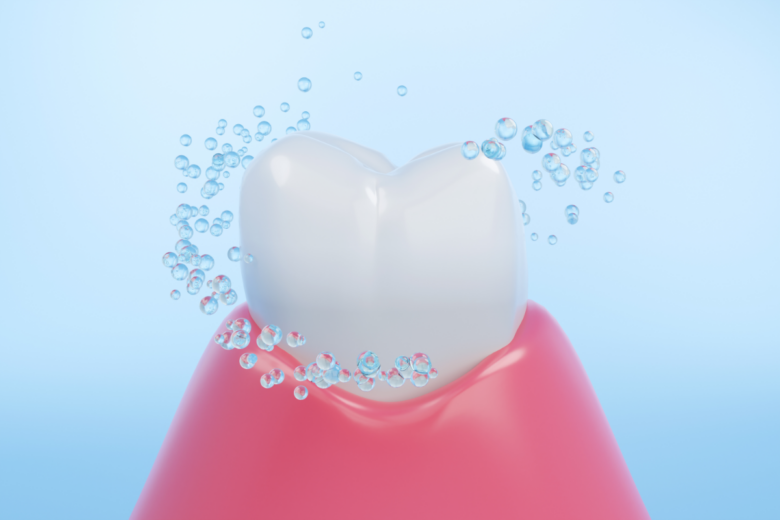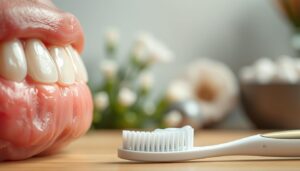Gum health is often overlooked in daily oral hygiene routines, but it plays a crucial role in maintaining overall dental well-being. Healthy gums are the foundation for strong teeth and a vibrant smile, and when neglected, they can lead to a variety of dental problems, including gum disease, bad breath, and even tooth loss. One of the most effective treatments to preserve and restore gum health is a procedure known as deep cleaning, or scaling and root planing. This treatment goes beyond the standard dental cleaning, targeting the areas below the gumline to remove harmful plaque and tartar buildup that may contribute to gum disease.
Deep cleaning is not just about cleaning the surface of your teeth but addressing the root causes of gum inflammation and infection. By understanding the significance of this procedure, you can better appreciate its role in preventing more severe dental issues down the line. In this article, we will explore the essential benefits of deep cleaning, why it’s sometimes necessary, and how it can help maintain your gums and overall oral health. Whether you’re considering the procedure or simply want to learn more about gum care, this guide will provide valuable insights into the importance of maintaining healthy gums through effective dental treatments.
In addition to its role in preventing gum disease, deep cleaning can also improve the overall health of your mouth. It helps eliminate bacteria that may be contributing to bad breath, offering a fresher, cleaner feeling in your mouth. Additionally, addressing gum inflammation early through deep cleaning can prevent the need for more invasive treatments later, potentially saving you time, discomfort, and money in the future.
By understanding the significance of this procedure, you can better appreciate its role in preventing more severe dental issues down the line. Gum disease is a progressive condition, and early intervention through deep cleaning can often stop it in its tracks before it leads to irreversible damage. In this article, we will explore the essential benefits of deep cleaning, why it’s sometimes necessary, and how it can help maintain your gums and overall oral health. Whether you’re considering the procedure or simply want to learn more about gum care, this guide will provide valuable insights into the importance of maintaining healthy gums through effective dental treatments.
1. What Is Deep Cleaning of the Gums?
Deep cleaning, also known as scaling and root planing, is a specialized dental procedure aimed at cleaning the teeth and gums more thoroughly than a regular cleaning. While regular cleanings remove plaque and tartar from above the gumline, deep cleaning reaches below the gumline to eliminate harmful buildup of plaque and tartar that can lead to gum disease. This treatment is typically recommended when signs of gum disease, such as bleeding gums or persistent bad breath, are present. By thoroughly cleaning the teeth and roots, deep cleaning helps restore gum health and prevent the progression of periodontal disease.
2. When Is Deep Cleaning Necessary?
Deep cleaning becomes necessary when gum disease progresses beyond the early stage of gingivitis into a more severe condition known as periodontitis. If left untreated, periodontitis can lead to significant damage to the gums, teeth, and bone structure. Signs that you may need a deep cleaning include:
- Swollen, red, or bleeding gums
- Persistent bad breath (halitosis)
- Receding gums
- Pockets forming between the gums and teeth
- Loose teeth
Your dentist will assess your condition and determine whether deep cleaning is necessary based on the extent of plaque and tartar buildup, as well as the health of your gums.
3. How Deep Cleaning Contributes to the Prevention of Periodontal Disease
Deep cleaning plays a key role in preventing periodontal disease by removing plaque and tartar that harbor harmful bacteria. These bacteria can cause inflammation, infection, and even damage to the bone structure supporting your teeth. Regular deep cleaning treatments help prevent the advancement of gum disease by:
- Reducing bacteria buildup and infection below the gumline
- Promoting the healing of gum tissue
- Preventing the formation of pockets between the gums and teeth, which can trap bacteria and worsen gum disease
- Reducing the risk of tooth mobility or loss
By regularly addressing these concerns, deep cleaning is an effective measure in maintaining healthy gums and preventing the need for more extensive treatments.
4. The Difference Between Regular Cleaning and Deep Cleaning
While both regular cleaning and deep cleaning focus on removing plaque and tartar, the primary difference lies in the depth of the cleaning. Regular cleaning is performed to maintain overall oral health and remove surface-level plaque and tartar from the areas above the gumline. This type of cleaning is sufficient for people with healthy gums or mild gingivitis.
In contrast, deep cleaning targets the areas below the gumline, where plaque and tartar can accumulate and cause infection. It involves two main steps: scaling (removing plaque and tartar) and root planing (smoothing the tooth roots to prevent further bacterial growth). Deep cleaning is more intensive and may require local anesthesia to ensure comfort during the procedure.
5. Steps of the Deep Cleaning Procedure: What to Expect
A typical deep cleaning procedure consists of two main stages: scaling and root planing. Here’s what to expect during each step:
- Scaling: The dentist uses specialized instruments to remove plaque and tartar from the tooth surfaces and beneath the gums. This process may involve the use of an ultrasonic device to break up stubborn deposits.
- Root Planing: Once the plaque and tartar are removed, the dentist smooths the roots of the teeth to help prevent future bacterial buildup. This step helps the gums reattach to the teeth and promotes healing.
The procedure may take one or more visits, depending on the severity of the buildup and the number of areas requiring treatment.
6. Immediate and Long-Term Benefits of Deep Cleaning
Immediate Benefits:
- Reduced Inflammation: After deep cleaning, the gums begin to heal, reducing swelling and redness.
- Improved Breath: Removing the bacteria causing bad breath leads to fresher breath soon after the procedure.
- Healthier Gums: The gums start to reattach to the teeth, improving overall gum health.
Long-Term Benefits:
- Prevention of Gum Disease: Deep cleaning helps prevent the progression of gum disease, reducing the risk of serious complications like tooth loss.
- Better Overall Oral Health: By regularly maintaining gum health, you can avoid more invasive dental procedures in the future.
- Improved Aesthetic Appearance: Healthy gums enhance the appearance of your smile, as there is less swelling and recession.
7. How Deep Cleaning Helps Prevent Tooth Loss
Deep cleaning can significantly reduce the risk of tooth loss by preventing the progression of gum disease, which is a leading cause of tooth loss. As gum disease advances, it can cause the gums to recede, creating pockets between the teeth and gums where bacteria thrive. If left untreated, this can lead to bone loss and the eventual loosening of teeth. By removing the plaque and tartar that cause infection and inflammation, deep cleaning helps protect the underlying bone structure, preventing the tooth loss associated with severe periodontal disease.
8. Side Effects and Post-Procedure Care
While deep cleaning is generally safe, some people may experience mild discomfort or sensitivity after the procedure. Common side effects include:
- Gum Sensitivity: The gums may feel sore or tender, especially when brushing or eating hot or cold foods.
- Bleeding: Minor bleeding is normal during and after the procedure, particularly if gums are inflamed.
- Swelling: There may be some swelling in the gums, which typically subsides within a few days.
Post-Procedure Care: To promote healing and ensure the best results, follow these guidelines:
- Maintain Good Oral Hygiene: Continue brushing and flossing, but be gentle around the treated areas.
- Use a Soft-Bristled Toothbrush: This will help avoid irritation to sensitive gums.
- Avoid Hard or Sticky Foods: These can irritate the gums or dislodge any healing tissue.
- Follow-Up Appointments: Your dentist may schedule a follow-up visit to monitor the progress of your healing.
With proper care, the discomfort will subside, and your gums will begin to show signs of recovery and improved health.
This content provides a comprehensive understanding of deep cleaning, its benefits, and what to expect during and after the procedure. Let me know if you’d like to make any adjustments or continue with the conclusion!
The Relevance of Deep Cleaning in Maintaining Oral Health and Well-Being
Maintaining optimal gum health is crucial not only for a beautiful smile but also for overall well-being. Deep cleaning is a powerful tool in the fight against gum disease, effectively addressing the root causes of inflammation, infection, and eventual tooth loss. By targeting areas below the gumline where regular brushing and flossing can’t reach, deep cleaning helps eliminate harmful plaque and tartar buildup, reducing the risk of more severe dental issues.
The benefits of deep cleaning extend far beyond just improving the appearance of your gums. Immediate improvements, such as reduced inflammation and fresher breath, provide relief and comfort, while the long-term benefits include healthier gums, stronger teeth, and a decreased risk of periodontal disease progression. Moreover, by preventing tooth loss and preserving the bone structure around your teeth, deep cleaning plays a crucial role in protecting your smile for the future.
Incorporating deep cleaning into your dental care routine is an essential step in maintaining your oral health, especially if you’re experiencing signs of gum disease. Regular checkups and early intervention can help prevent complications down the road. With the proper care and attention, deep cleaning not only restores gum health but also enhances your overall quality of life by fostering a clean, healthy mouth.
By understanding the importance of this procedure, you can take proactive steps to ensure the health of your gums, keeping your smile radiant and your teeth strong for years to come. Don’t underestimate the power of healthy gums—their care is just as important as the teeth they support.
Deep cleaning can also have a profound effect on your general health. Emerging research suggests that oral health is closely linked to overall well-being, with gum disease being associated with a variety of systemic conditions, including heart disease, diabetes, and stroke. By addressing gum disease early, you’re not only safeguarding your oral health but potentially reducing the risk of developing these serious health issues.
By understanding the importance of this procedure, you can take proactive steps to ensure the health of your gums, keeping your smile radiant and your teeth strong for years to come. Don’t underestimate the power of healthy gums—their care is just as important as the teeth they support. Regular deep cleanings, along with good oral hygiene habits, are essential investments in your long-term health, enabling you to enjoy a lifetime of bright smiles and optimal oral function.




